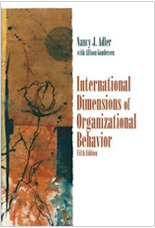
International scholars, executives and their families are experiencing unprecedented challenges during this time, as we all are. This blog addresses the specific ways that expatriates encounter stress, including resources to strengthen emotional resilience and coping. By developing this capacity, we will be better prepared to bounce back in the face of stress.
When our home country is thousands of miles away, uncertainty and constant change are more prominent. Many of my international clients struggle with the following:
- The uncertainty of when they will reconnect with loved ones
- Family members reacting to the pandemic in a different timeframe and intensity
- Parenting while learning about the challenges of virtual education
- Communicating virtually in a second language with multicultural groups
- Instability of visas, the possible interruption of academic research and other activities
- Daily performance in a new job with the need to produce positive results, while all of the above is happening.
Why does emotional resilience matter for those who cross cultures? It matters because constant change can wear us out. When one moves outside of a culture, change is inevitable. Changes affect us on physical, emotional and psychological levels. These demands can generate stress, uncertainty about our new identity and a sense of disconnection. The truth is, they won’t stop coming. We need to prepare ourselves to deal with change. Once prepared, we may become destabilized, but we have the tools and resources to center ourselves.
There are three key mindsets that set the foundation for emotional resilience, as identified by American professor and author Brené Brown. Emotionally resilient people are more likely to tell themselves:
- “I can do something that will help manage my feelings and cope.” This is a shift from a belief that ‘this is happening to me” to “I can influence the outcome.” Different cultures deal with ambiguity in different ways. Some people believe that they have little control over their circumstances; others believe that they have a high degree of influence and a range of ways to deal with uncertainty. Ultimately, when we take responsibility to change our situation, we can more easily access emotional resilience.
- “I will ask for help.” With this mindset, we see ourselves as resourceful, with good problem-solving skills. Of course, our personal and cultural traits shape our predisposition to ask for help. Nonetheless, we can practice this habit and develop beyond our cultural constructs.
- “I will connect to my social support groups.” When we connect to those who truly understand and emotionally feel us, and we understand and empathize with them, we create a shared sense of belonging. Family and friends, even from a distance, play an important role in the lives of those who are abroad. By keeping those relationships alive, we can feel part of a larger community and develop new relationships in the host country.
What can we do to grow emotional resilience? Here are some practical tools that can make a difference immediately and over time:
Immediately
When faced with a difficult situation, slow down and connect to yourself. Feel your physical body and emotions. Common stressors for expatriates include: Disagreeing with a supervisor, receiving feedback in a way that feels disrespectful, and anticipating a presentation in English. What are yours? One of the things you can do immediately to address any stress is to rely on a powerful ally: Your breath.
Breathe intentionally. Inhale for three seconds and exhale for six seconds. This activates the “relaxation response” in your parasympathetic nervous system, in turn reducing your cortisol level, a stress hormone. High levels of cortisol negatively impact our IQ, making us less cognitively agile. This breathing exercise creates a more peaceful state, which allows for better focus and decision-making.
Feel your body. Most of us forget – when under stress – that we have a body. Try to keep the connection with your physical self. This awareness reminds us that we have a ‘container’ that is able to receive, process and let go of thoughts and strong emotions. Staying embodied and grounded brings us into the present. To get grounded, practice this a few times daily: 1) Focus on your feet and feel them supported by the ground; 2) consciously touch your shoulders and arms and intentionally notice the sensations of your touch.
Orient to the external environment. When things get rough and emotions are hard to deal with, the simple act of shifting your attention to the external environment can make a considerable difference. To do this: 1) Choose a person, a landscape, an object, a color, a texture, or something pleasant to focus on; 2) keep your attention on this object for one minute; 3) notice how this exercise changes your emotional state.
Over a period of time
Sometimes things overwhelm us and get out of our control. Emotional resilience doesn’t make stress go away or stop coming, but being better prepared significantly increases our ability to deal with it. Mindfulness practices help us to find more balance in life. The purpose of being mindful is to be aware, observant, present and non-judgmental no matter what you are doing in the moment. Mindfulness expands our ability to hold stress. How? If your capacity to hold stress is like a cup, there are ways to widen and deepen that cup over time. If you want to strengthen your emotional resilience here are a variety of practices:
Get enough rest and sleep Take multiple perspectives
Mindfully eat a healthy diet Meditation
Set daily intentions Yoga
Reflection and journaling Stretching
Working out Martial arts
Breath deeply & other techniques Slow down
Spend time in nature Take a media fast
Learn to play a musical instrument Gratitude practice
Engage in a spiritual practice Forgiveness practice
Creative art projects Relaxation techniques
Listen to soothing music Play
Rejoice in the small things Random acts of kindness
Pause from the computer every 45 minutes Sing and dance
Basically, any activities that foster self-care, self-awareness, presence and connection are worth having in our emotional resilience toolbox. They are companions that increase our ability to bounce back from daily stresses.
I recently prepared for a hurricane, for the first time, without knowing what to expect. The experts couldn’t predict how strong the impact of a landfall would be. I went to a shelter and soon noticed a long hallway outside the building. The words “walking meditation” came effortlessly to my mind and I spent part of the day walking that hallway, relaxing my nervous system. This is the power of a practice: It reminds us that we have possibilities. In that case, I had a calmer experience in the midst of feeling scared. After practicing, I felt more present and became more available to connect to family and friends, to chat with people at the shelter, to be hopeful that everything would go well, and it did!
In this blog, I’ve discussed some of the challenges expatriates face and have suggested practices to address them. I encourage you to customize the list of practices above, crossing out what isn’t for you and adding your own. Then, practice some of them daily or weekly. Commit to at least 5 minutes for each one. And then see what impact they have on your life. Even in these challenging times, we can design our lives.
When many in the world are struggling with basic needs, displacement and loss of loved ones; we are so blessed to only need to face the mild and moderate stresses of an international transition. If you take a deep breath now, and feel grateful about this sobering truth, you’re off to a good start!
 Many of the expats I train these days are high-tech engineers and managers working in the Silicon Valley. They are immersed in a fast-paced, rapidly changing culture, which is known for embracing more uncertainty and risks than most corporate environments. This part of California receives international assignees from all over the world who often have their self-identity challenged. A pre-departure or post-arrival intercultural training program addresses culture shock as part of orienting assignees to manage these potential shifts.
Many of the expats I train these days are high-tech engineers and managers working in the Silicon Valley. They are immersed in a fast-paced, rapidly changing culture, which is known for embracing more uncertainty and risks than most corporate environments. This part of California receives international assignees from all over the world who often have their self-identity challenged. A pre-departure or post-arrival intercultural training program addresses culture shock as part of orienting assignees to manage these potential shifts. Having a physical body doesn’t necessarily mean fully living in that body. Our untrained minds and emotions often take over and this is a high cost for expats, who want to experience a new land and culture. Many of my clients have intense work schedules, which leave little room for body awareness, self-care, and relaxation. They often struggle to find time to be present with the very thing that carried them across the globe: the physical body.
Having a physical body doesn’t necessarily mean fully living in that body. Our untrained minds and emotions often take over and this is a high cost for expats, who want to experience a new land and culture. Many of my clients have intense work schedules, which leave little room for body awareness, self-care, and relaxation. They often struggle to find time to be present with the very thing that carried them across the globe: the physical body. Why does inner growth matter to your international assignment?
Why does inner growth matter to your international assignment? No matter what your motivations are to accept an international assignment, the moment you agree to relocate with your organization, you are signing a contract with yourself and your growing edges. You commence a path that will challenge deep assumptions, trigger psychological shadows, expand perspectives, and shake the ground for change to happen to you and those around you.
No matter what your motivations are to accept an international assignment, the moment you agree to relocate with your organization, you are signing a contract with yourself and your growing edges. You commence a path that will challenge deep assumptions, trigger psychological shadows, expand perspectives, and shake the ground for change to happen to you and those around you.
 Institute for Global Integral Competence
Institute for Global Integral Competence Integral Coaching Canada
Integral Coaching Canada International Dimensions of Organizational Behavior
International Dimensions of Organizational Behavior Intercultural Marriage: Promises and Pitfalls
Intercultural Marriage: Promises and Pitfalls